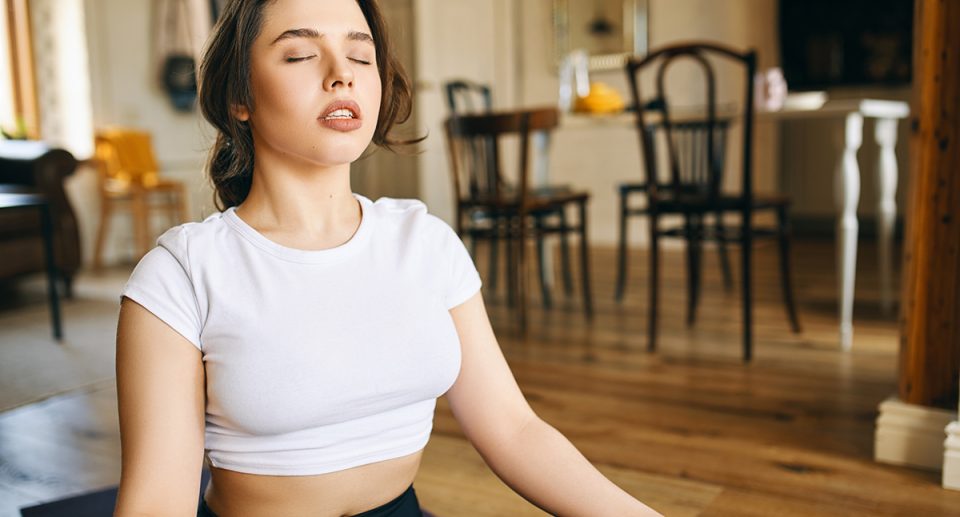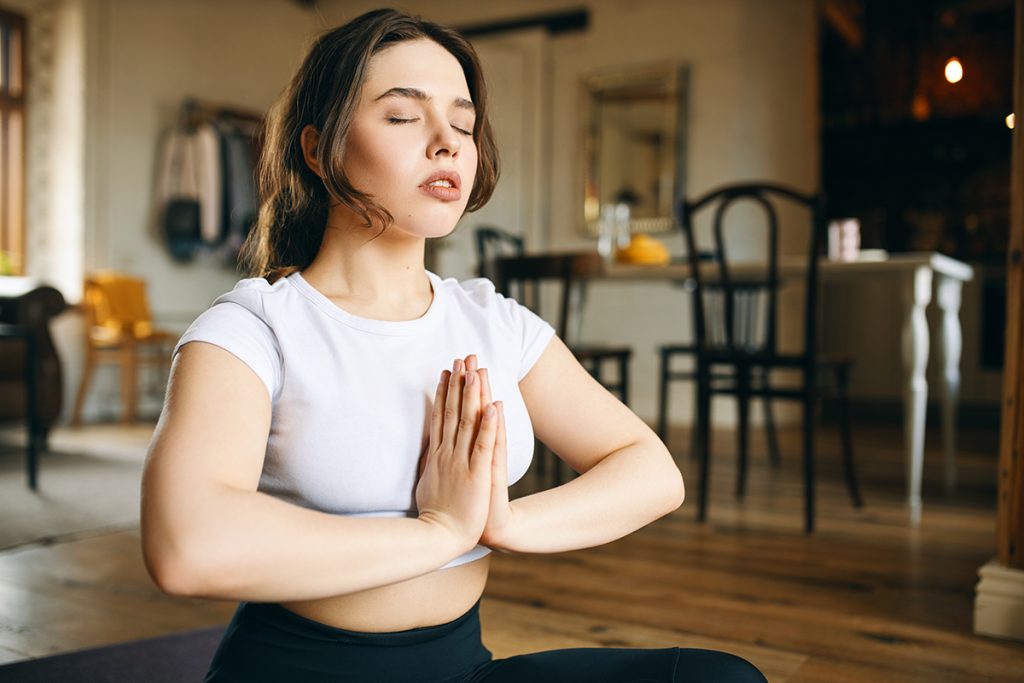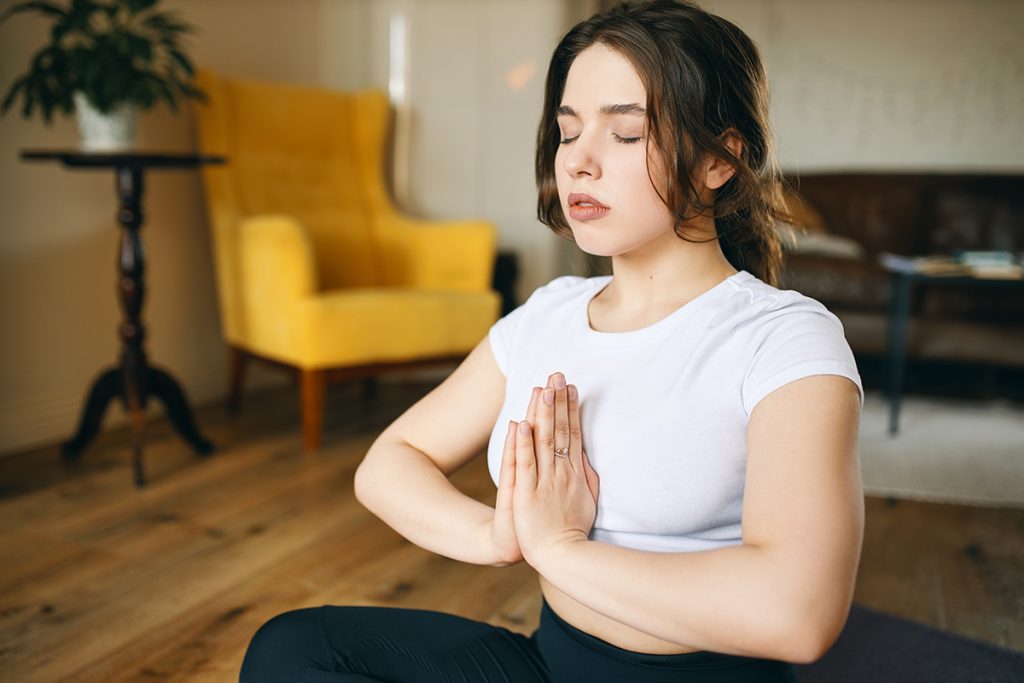10 Breathing exercises that can immediately induce a sense of calmness

While you can’t erase the multitude of stressors in the world, you can employ strategies to manage your emotions and reduce anxiety to achieve a sense of calmness. Your breath, something you engage in constantly, serves as a valuable tool for this purpose.
Breathing exercises for anxiety gained popularity during the COVID-19 pandemic, and many have found them effective for alleviating stress when feeling overwhelmed.
Anxiety is widespread, affecting approximately 40 million adults in the United States annually, according to the Anxiety & Depression Association of America, constituting over 18 percent of the population!
So, how does breathing impact your body?
Your breathing style affects your heart rate, blood pressure, and nervous system, all influencing your anxiety and stress levels. Shallow breathing, characterized by minimal air intake into your lungs and quick breaths through the mouth, typically triggers stress, panic, and tension, signaling the body’s ‘flight’ response.
Contrarily, deep breathing involves drawing air deep into the lungs through the nose, engaging the chest and diaphragm. This method facilitates increased oxygenation of the brain, lowering blood pressure and heart rate. Moreover, it communicates to the body that it can relax and feel safe, making it effective for anxiety relief and to quickly experience a sense of calmness.

How do breathing exercises alleviate anxiety?
Breathing exercises effectively reduce overall stress and anxiety levels while preventing sudden spikes. Consistent practice is key, not just during anxious moments. It’s recommended to practice several times daily, such as upon waking and before bed, taking as many breaths as necessary to achieve a sense of calmness, typically around three to four breaths.
By taking a moment for relaxation upon waking, you set a positive tone for the day, while doing so before bed aids in transitioning to a restful state for sleep. Once comfortable with the exercises, they can be utilized during stressful periods. Deep breathing quickly leads to a physiologically state of feeling a sense of calmness.
Important: If the exercises increase stress at any point, discontinue and retry later.
Below you’ll find 10 anxiety-relieving breathing exercises recommended by experts.
01. Box breathing
Box Breathing, also known as four-square breathing, is a simple exercise beneficial for both a mental and physical sense of calmness. It serves as an effective psychological distraction and helps in slowing down the body’s response to stress.
Begin by inhaling for four seconds, then hold your breath for another four seconds, and finally exhale for four seconds. Optionally, close your eyes and visualize constructing and deconstructing a one-dimensional square box as you follow the breathing pattern.

02. 4-7-8 breathing
This exercise is more complex, so only try it if you’re experienced in deep breathing. However, it’s effective for relaxing your nervous system and managing stress, as you exhale and focus on your breath twice as long as you inhale.
Here’s how: Sit comfortably. Fully exhale through your mouth. Inhale through your nose for four seconds. Hold for seven seconds. Exhale through your mouth for eight seconds.
03. Triangle breathing
Like box breathing, triangle breathing involves counting breaths and visualizing a specific shape. If you find multiple numbers confusing, this technique simplifies things by staying within a count of three.
Here’s how: Sit comfortably. Inhale through your nose for three counts. Hold your breath for three counts. Exhale through your mouth for three counts. Optional: Close your eyes and imagine constructing and deconstructing a one-dimensional triangle.
04. Diaphragmatic breathing
This technique is a popular choice both personally and professionally to achieve a sense of calmness. It emphasizes diaphragmatic breathing, which might feel unfamiliar if you’re accustomed to shallow chest breathing. It’s particularly beginner-friendly, offering guidance for those unfamiliar with proper deep breathing techniques.
Here’s how: Optionally, place one hand on your chest and one on your diaphragm. Inhale through your nose, ensuring your belly expands. Pause briefly. Exhale through your mouth.

05. Tactical breathing
Breathing through your nostrils rather than your mouth aids in deep breathing and slowing down your breath. By focusing on breathing through your nose and counting, you shift your attention away from panic or anxiety and gradually will move forward towards a sense of calmness.
Here’s how: Sit comfortably. Inhale through your nose for four seconds. Pause briefly. Exhale through your nose for four seconds.
06. Straw breathing
If anxiety causes your temperature to rise, try a breathing technique to help bring it down. Straw breathing is one such practice, offering a cooling sensation through the mouth.
Here’s how: Form your mouth into a tight ‘O’ shape, as if blowing a kiss. Optionally, use an actual straw to breathe through. Inhale through the straw or the ‘O’ shape. Pause briefly. Exhale through the straw or the ‘O’ shape.
07. Mantra breathing
If traditional breathing exercises aren’t helping you re-center and induce a sense of calmness, adding affirming words can enhance relaxation and focus on the breath.
Repeat the phrase ‘breathe in’ (or another mantra of your choice). Inhale through your nose. Pause briefly. Then, repeat the phrase ‘breathe out’ to yourself and exhale through your mouth.

08. Breath of fire
Feeling sluggish around four o’clock and in need of a pick-me-up to power through the day? This technique is perfect for you. Battling fatigue while having to stay active can lead to stress and anxiety, but this invigorating method can recharge you enough to last through the day with a sense of calmness.
Here’s how: Inhale rapidly through your nose. Tighten your stomach by pulling your navel toward your back. Exhale quickly through your nose while keeping your stomach tight. Repeat this rapid breathing pattern 15 to 20 times, or until you run out of breath. Pause briefly, then take a few deep breaths. Repeat the exercise up to five times.
09. Finger breathing
This exercise is beneficial for those who find it challenging to stay present and get out of their own thoughts. Unlike other techniques that primarily focus on breathwork, this one engages all senses, offering a more immersive experience.
Here’s how: Sit comfortably. Place your left hand palm-up on your lap.
As you inhale, use your right hand to trace up your thumb with one finger. Exhale while tracing your thumb downward. Repeat this tracing motion on all five fingers or until you feel a sense of calmness.
10. Cocoon breathing
For significant tension relief, experiment with the cocoon breath. This method fosters feelings of privacy, boundaries, and deep exhalation, making it ideal for taking a moment to regroup.
Here’s how: Inhale with your eyes open, then pause momentarily. Exhale while closing your eyes. Envision drawing a curtain down over yourself as you exhale. Repeat as necessary, imagining yourself enveloped deeper with each breath.

10 Breathing exercises that can immediately induce a sense of calmness
Now that you have several anxiety-relieving breathing exercises, it’s essential to start practicing them to feel a sense of calmness. If you find it challenging initially, don’t worry; take a break and try again in a day or two, or alternatively you could try some other simple practices. Learning breathing techniques is a gradual process that doesn’t require rushing!



















